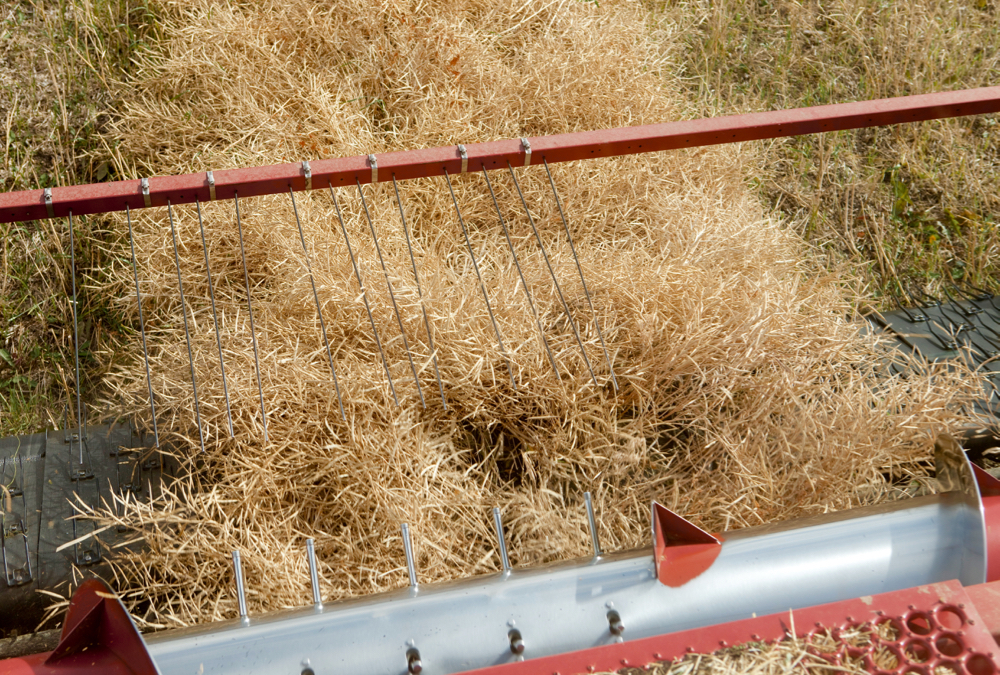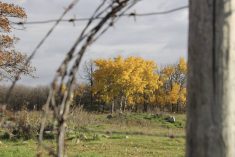Damaged patches of soybeans around Manitoba this year could be due to a combination of stresses, says Manitoba Agriculture plant pathologist Holly Derksen.
“It’s a tricky year for diagnosing these problems,” Derksen said Wednesday during the Crop Talk Westman webinar.
“When multiple stressors are present often the soybean plants may respond differently. Not all plants, not all fields, not all varieties will necessarily look the same. There will be chlorosis in one field or a dead patch in another field. It doesn’t mean completely different things are going on. They are both under stress and they are just expressing it in different ways.”
Read Also

Alberta harvest wrapping up: report
Harvest operations advanced to 96 per cent complete in Alberta as of Oct. 7, with only a few late-seeded cereal and canola fields remaining, according to the latest provincial crop report.
Stressors include iron chlorosis earlier in the season, insufficient rain, insect damage, possibly one or multiple diseases, a potassium deficiency and spray drift, including dicamba on non-dicamba tolerant soybeans.
Symptoms include stem discolouration, stunted plants, poorly developed roots, chlorosis and/or necrosis on the leaves, top die-back, premature ripening and plant death.
“In the Red River Valley and eastern Manitoba I’d say there is a little in most fields and a lot in some fields,” but soybeans in the southwest appear less affected, Derksen said.
Farmers might suspect phytophthora root rot, as it’s one of the more common diseases in Manitoba soybeans, she said. But it also normally prefers wetter conditions, which wasn’t the case this year.
“There is probably going to be a reduction in (soybean) yield based on what we’ve seen over the last couple of years just because of the lack of moisture this year, especially in August,” she said.
Phytophthora symptoms typically move up the stem with chocolate-brown-coloured damage. It can show up anytime but is more pronounced later in the season.
Fusarium root rot is also common and showing up often in samples tested at the vincial crop diagnostics laboratory.
“A diagnosis of a fusarium species is likely not the whole story,” Derksen said. “Fusarium, in some form, will almost always be there. It’s pretty endemic and is affecting our plants to some extent; whether it is actually having an affect above ground depends on the year.
“Sometimes when there is so much fusarium present it’s hard to tease out the information. There could be other things going on in the plant but fusarium has over run everything at that point.”
Other root rots that affect soybeans include rhizoctonia and pythium.
Brown stem rot, which ins’t common in Manitoba, can also infect soybeans.
Despite the many possibilities for sickly plants, Derksen said, farmers can still send samples for testing to the Crop Diagnostic Centre, 201-545 University Crescent, Winnipeg, Man., R3T 5S6 (phone 204-945-7707, fax 204-945-4327). A submission form is available online.
Farmers should complete the form and include as much background information as possible, including the problems they suspect, Derksen said.
Submit whole plants, including the roots. Send in multiple plants with a range of symptoms, as well as healthy plants. Submit samples right after they’ve been collected, so they are still fresh upon arrival.
— Allan Dawson is a reporter for the Manitoba Co-operator at Miami, Man. Follow him at @AllanReporter on Twitter.

















